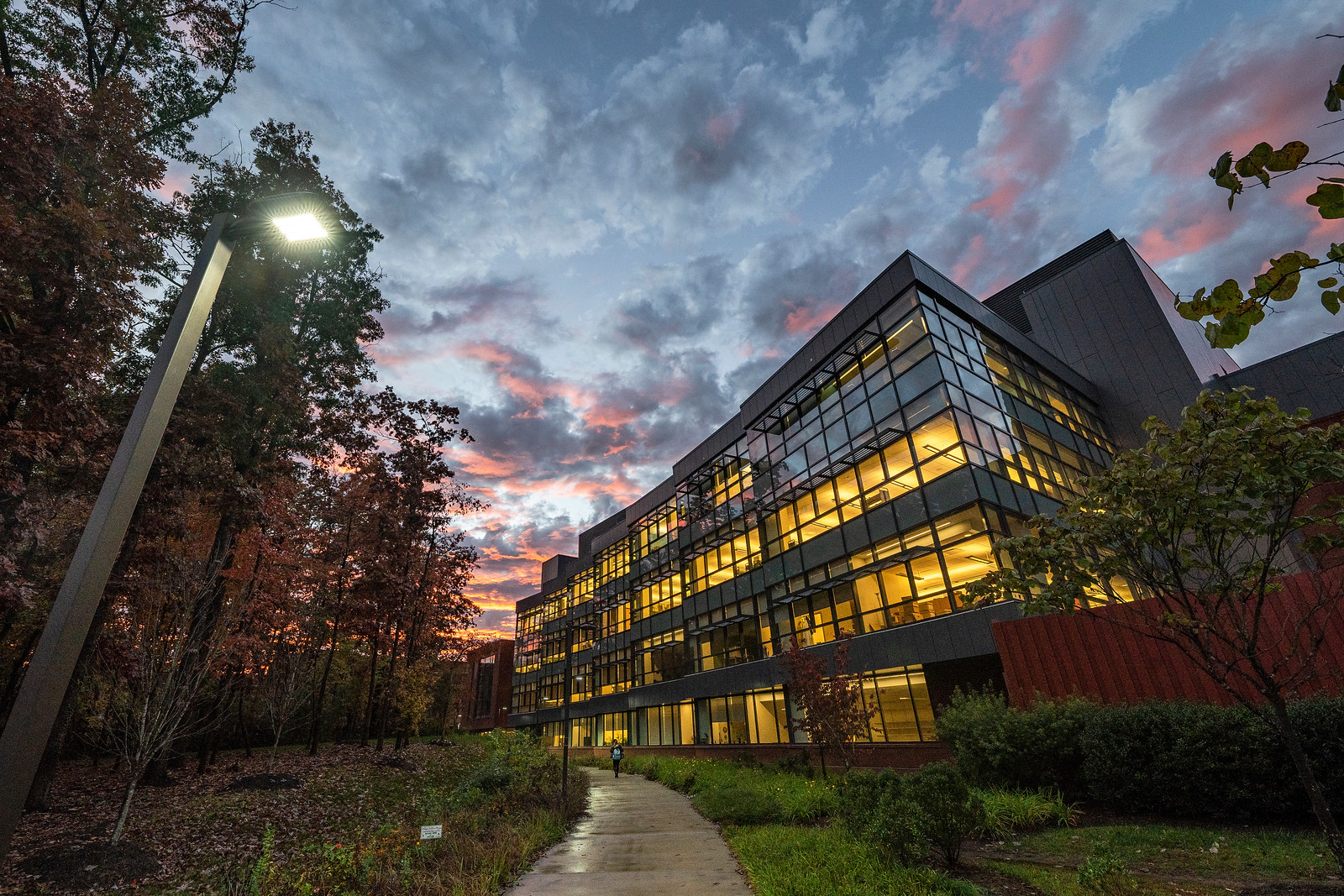
Fenwick Library on the George Mason University Campus in Fairfax. Photo by Evan Cantwell/Creative Services.
Bob Vay, a technology and exhibitions archivist in University Libraries at George Mason University, has two degrees from the institution and has worked on the Fairfax Campus since 1993.
For him, the COVID-19 pandemic is “unfortunately the most significant event on campus, negative or positive,” since the Patriots’ unexpected run to the 2006 NCAA Final Four.
That is why, Vay said, the work of the University Libraries’ Special Collections Research Center, of which he is part, to document COVID-19’s impact on the university by archiving materials such as the university’s communications and other materials which reflect the upheavals being felt by students, faculty and staff is so important.
“The directions in which institutions go are influenced by the collection of experiences they, and the individuals who make them up, go through,” said Vay, BA American Studies ’92; MA History ’99. “For every institution and every person, these experiences are going to be different. This is another experience, positive or negative, people will remember.”
The archive will be built with official university communications and emails, social media posts, posted minutes from meetings where things such as grading policies and staff concerns are discussed. Oral histories with the university’s top officers eventually will be taken as well.
Student assistants in the Special Collections Research Center are documenting their experiences, both academic and social, in personal journals that also will include interviews with family and friends and, hopefully, some photos.
An Honors College class, HNRS 260 Society and Community Engagement, taught by Maoria Kirker, who leads the Teaching and Learning Team in University Libraries, is undertaking a similar task.
Lynn Eaton, director of the Special Collections Research Center, said collecting views and anecdotes from multiple perspectives and experiences is important, and noted that archivists work to not only document decisions by the people in charge, but to collect materials from individuals and organizations that are not always found in the archive.
Looking back at history is like looking through a prism, Eaton said.
“You’re never going to get the full prism,” she said. “You’re never going to get all sides of it because you’re not living it. But if you can have as many pieces and as many layers, then historians can better understand what was going on in this time period, and in an instance like today, perhaps use that to help inform decisions in the future.”
“And it will not be just historians who use this or scholars,” said Brittney Falter, research services coordinator for the Special Collections Research Center. “This information will be accessible to the public and anyone who wants to learn about others’ experiences during this time. Collecting these issues has a national impact, but it can also be individual. It shows the history of Mason and can hopefully be a learning tool of what to do and what not to do in the future.”
The assignment at Mason is challenging because the archiving is happening in real time and almost every piece of information so far is from electronic communications, just words. Vay collected a poster the university put out about precautions to prevent COVID-19, and the hope is the pictures the students are taking will be part of a physical archive Special Collections hopes to produce.
“It’s a moment in time people will come back to,” Eaton said of the pandemic.
Of the budding archive, she said, “It will help make this event come alive to Mason students of the future.”
